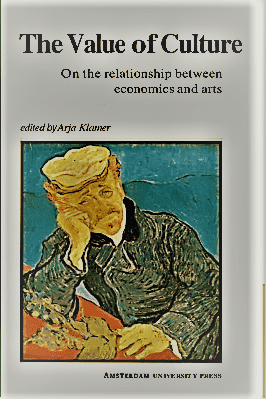
| Book Title | The Value Of Culture On The Relationship Between Economics And Arts |
| Book Author | Arja Klamer |
| Total Pages | 244 |
| Book Views | |
| Language | English |
| Book Download | PDF Direct Download Link |
| Get Hardcover | Click for Hard Similar Copy from Amazon |
The Value of Culture On the relationship between economics and arts Edited byArja Klamer
THE VALUE OF CULTURE ON THE RELATIONSHIP BETWEEN ECONOMICS AND ARTS
The square contains the objective, the circle the subjective. The square stands for science and rationality, the for passion, emotion, and morality. The square IS the domain of the scientist, the circle of the therapist. The square is said to accord with masculine values, the circle evokes feminine ones.
This modernist mold has influenced sciences everywhere, and the arts, architecture, management too. In economic science the objective is to capture the phenomena to be explained in “square” terms, that is, terms that can be formalized and quantified.
The strategy is to rely little as possible on the circle. In a truly scientific analysis in economics, the only circle concept left is “utility”, and that is presumed given.
The constraints under which individuals maximize their utility are made out to be square.
The modernist mold dictates a strategy for the study of the art world. Aesthetic values and romantic sentiments pertain to the circle, do not fit the square, and so have to Ignored. All behavior is to be reduced to moments of “choice”, where preferences are given and all the relevant variation is in the constraints (income, prices, technology).
Culture, III the sense of shared values, has no place in such an analysis because it does not fit the square.
Economists have been proficient in this strategy and continue to be so, as the contributions in the volume show. But it is the source of much of the disagreement among the economists on these pages.
Along with colleagues across the spectrum of the arts and the sciences McCloskey, Huuer, Amanglio, Ruccio, Graham, I, and many others in economics want to break with this modernist mold because it is confining and threatens to render economic analysis sterile (see McCloskey’s remarks in chapter 12).
That is not to say that we would disregard conventional economic reasoning altogether although Amariglio, Ruccio, and Graham would celebrate such a move, fed up as they ate with the dominance of traditional economics but we would want to make economics more interesting by bringing the circle into the square and the square circle.
One way of doing so is to make the only element of the Circle III square analysis, explicitly the subject of our inquiry.
Certainly, when it comes to art, the taste can hardly be called “given” and assumed to be beyond reason.
After all, much of what happens III the arts are geared to the formation of tastes. Artists persuade each other and critics to appreciate their newly invented forms.
learn to appreciate a Mondriaan by frequenting musea and discussing art. The negotiation about what art to value, about what constitutes good art, and what bad what the world of all about.
To identify, characterize and comprehend it requires us to go beyond the square and circle and apply concepts like value and culture which are neither square nor circle, neither objective nor subjective. McCloskey proposes to call such terms “conjecture” because they acquire meaning only III
To read more about the The Value Of Culture On The Relationship Between Economics And Arts book Click the download button below to get it for free
Report broken link
Support this Website
Click here to join our Telegram group for new Books